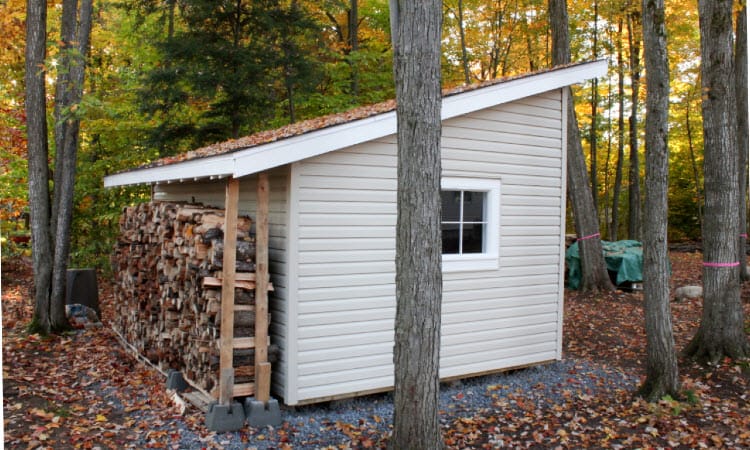Installing a shed with an overhang is a great way to add some extra protection to your outdoor storage space. With an overhang, you can keep your belongings dry and protected from the elements, while also creating a shady area to relax in. Here are some tips for installing a shed with an overhang.
Choose the Right Location
The first step in installing a shed with an overhang is to choose the right location. Look for a flat and level area that’s at least a few feet away from any trees or other structures. This will ensure that your shed is stable and won’t be damaged by falling branches or debris.
Prepare the Site
Once you’ve chosen the location for your shed, it’s time to prepare the site. Clear the area of any debris or vegetation and make sure the ground is level. If necessary, use a shovel or a garden rake to level the ground and remove any bumps or hills.
Build the Foundation
Next, you’ll need to build the foundation for your shed. There are several types of foundations you can choose from, including concrete, gravel, or cinder blocks. A concrete foundation is the most durable and long-lasting option, but it’s also the most expensive. A gravel foundation is a more affordable option, but it may not be as stable as a concrete foundation. Cinder blocks are a great choice if you need to raise the shed off the ground, but they can be more difficult to install than other types of foundations.
Install the Shed
Once the foundation is in place, it’s time to install the shed. Follow the manufacturer’s instructions carefully, making sure to anchor the shed securely to the foundation. If your shed has an overhang, make sure to install the overhang supports according to the manufacturer’s instructions as well.
Install the Overhang
Once the shed is in place, it’s time to install the overhang. Measure the length of the overhang and cut the supports to the appropriate length. Attach the supports to the shed using lag bolts or screws, making sure they’re level and securely attached.
Install the Roofing
Next, it’s time to install the roofing for the overhang. There are several types of roofing materials you can choose from, including metal, shingles, or corrugated plastic. Metal roofing is a durable and long-lasting option, but it can be more expensive than other types of roofing materials. Shingles are a more affordable option, but they may not be as durable as metal roofing. Corrugated plastic is a great choice if you’re looking for a lightweight and affordable option.
Install the Gutters
To ensure that your overhang provides maximum protection from the elements, it’s a good idea to install gutters. Gutters will help to channel rainwater away from the shed and prevent it from seeping into the foundation. There are several types of gutters you can choose from, including vinyl, aluminum, or copper. Vinyl gutters are a more affordable option, but they may not be as durable as aluminum or copper gutters.
Add the Finishing Touches
Once the shed and overhang are in place, it’s time to add the finishing touches. Install a door and windows if necessary, and add any shelving or storage units you may need. You can also add a coat of paint or stain to the shed to help protect it from the elements and give it a finished look.
In conclusion, installing a shed with an overhang is a great way to add some extra protection to your outdoor storage space. By following these tips, you can ensure that your shed and overhang are installed securely and will provide years of use and protection.

